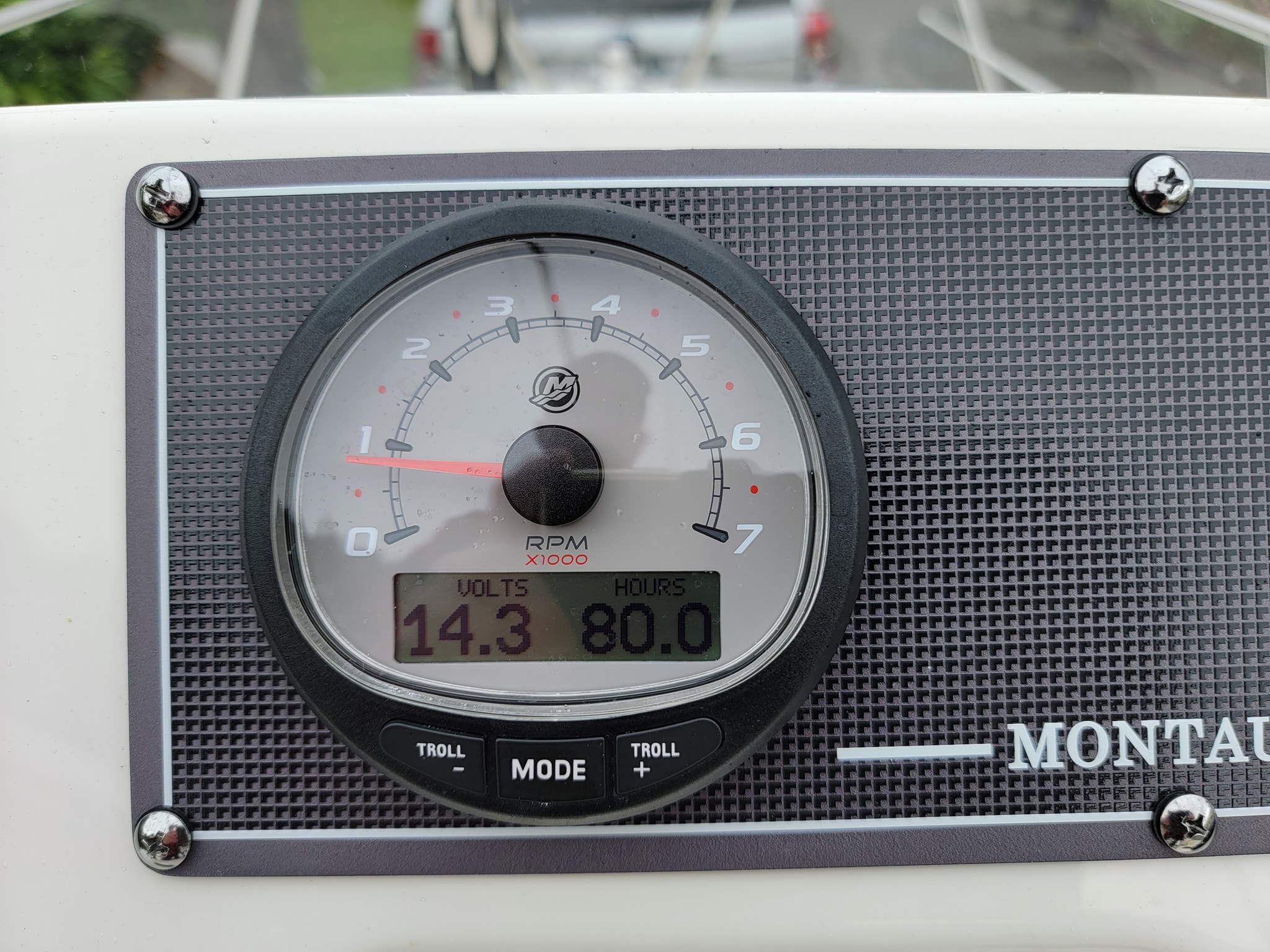I scheduled a service appointment for my boat, but I’ve decided to troubleshoot my outboard problem myself. In the spring all the shops are super busy, and have a long backlog of people like me who want to get their boats up and running again. The dealer was willing to schedule me a mobile appointment (where they actually come out to my house in Everett) three weeks out. I started by charging up the batteries and checking the voltages. They had gone up by almost a volt each. Then I got the boat out of the barn, hooked up a cooling water hose to it, and it started up just fine. I noted, however, that the battery voltage did not go up while the engine was running, which confirms that the engine was not charging the batteries. To go further I needed a service manual. It’s possible that I may have done the damage myself last fall when I accidentally hooked up the battery backwards. I thought the only damage was a blown fuse for the VHF radio, but I could be wrong. It’s also possible that I’ve already made several trips without my battery being charged, and with two big beefy batteries I just didn’t notice anything wrong until that last trip, when they finally ran out.
I’m getting a crash course on outboards. Mine is essentially a vertically-oriented, water cooled, 1.0-liter, four cylinder motorcycle engine. Like a motorcycle engine, my outboard doesn’t have an alternator; instead it has a stator right under the flywheel. While an alternator rotates an electromagnetic field inside a cylinder full of static windings, a stator rotates a ring of permanent magnets around the outside of a set of static windings.



I had to really dig around online to find a service manual for my exact engine. It seems that Mercury would prefer that you not have one. The oracle of outboard wisdom arrived from eBay on Friday. That and some Fluke tools led me to believe that my electrical problem was the rectifier/regulator. There was some ambiguity in the manual about it, but I was willing to bet the cost of the part that I was right. I managed to find the part at Sea-Way Marine in Lynnwood.

I was a bit dismayed that replacing the voltage regulator didn’t fix the problem. I’m glad that I couldn’t find the $246 Mercury part, and used an $87 aftermarket one instead. However, I eventually noticed a little fuse box by accident and started checking the fuses. All that grief was over a simple blown fuse the size of a dime – the 25 A main circuit fuse was blown. I would have checked it first if I had known that it even existed. Although I walked through the troubleshooting procedure in the service manual for the charging system, but it led me in a confusing direction. It suggested that I should change the voltage regulator, but it never said anything about the small fuse box on the front on the engine which should be checked first. I wonder how it ever worked without that? I replaced it and started getting 14.3 V on the battery while running, instead of 12.7 V which I had before. This means the engine is now charging the battery. It felt great to cancel my service appointment, and to start fishing again.
Discover more from Mini Montauk Adventures
Subscribe to get the latest posts sent to your email.


